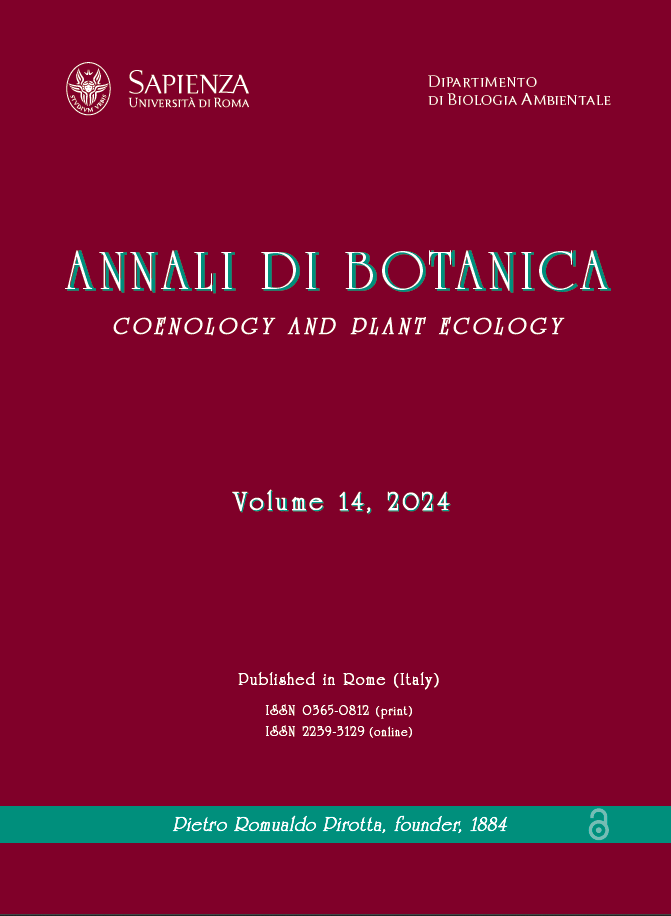Inventory, association, and habitat characteristic of Huperzine A natural resources in the Cibodas Botanical Gardens, West Java, Indonesia
DOI:
https://doi.org/10.13133/2239-3129/18351Keywords:
huperzine A, lycopodiaceae, phlegmariurus, association, vascular epiphyte, alzheimerAbstract
Huperzine A is a Lycopodium alkaloid that is important in the treatment of Alzheimer's symptoms. Until now, the raw material for this compound comes from the Lycopodiceae family, which is harvested directly from nature. However, biological information about this plant group is still limited, especially in its ecological aspect. Therefore, studies on this aspect are important to support sustainable use in their natural habitat. This research aims to carry out an inventory of Huperzine A natural resources and study their associations and habitat characteristics in the Cibodas Botanical Gardens. A survey was conducted on 29 host trees using a purposive sampling method. Three species of Huperzine A natural resources were identified, including Phlegmariurus pinifolius (Trevis.) Kiew, Phlegmariurus squarrosus (G. Forst.) Á. Löve & D. Löve, and Phlegmariurus phlegmaria (L.) Holub. The most abundant and evenly distributed species was P. pinifolius, while the least abundant and restricted distribution was P. phlegmaria. Phlegmariurus pinifolius showed no association with other vascular epiphytes, while P. squarrosus and P. phlegmaria showed associations. The species diversity of vascular epiphytes is significantly correlated with elevation and relative air humidity. Based on ecological aspects, we suggest P. pinifolius and P. squarrosus be developed in further bioprospecting studies.
Downloads
Published
How to Cite
Issue
Section
License
Copyright (c) 2024 Intani Quarta Lailaty, Muhammad Imam Surya, Muhamad Muhaimin, Lily Ismaini, Sofa Fajriah, Dewi Ratih Tirto Sari, Taufikurrahman Nasution

This work is licensed under a Creative Commons Attribution-NonCommercial-ShareAlike 4.0 International License.
The copyright for articles in this journal are retained by the author(s), with first publication rights granted to the journal, articles are free to use with proper attribution in educational and other non-commercial setting.

